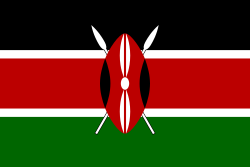This article has multiple issues. Please help improve it or discuss these issues on the talk page . (Learn how and when to remove these messages)
|
| Part of a series on the |
| Culture of Kenya |
|---|
 |
| Cuisine |
The Marama, also known as Abamarama, are a Luhya tribe occupying Marama Location in Kakamega District of the western province of Kenya. The town of Butere is located in west Marama and is a significant trading centre in Kakamega. They are said to have assimilated the Abashikunga clan of the Idakho.
Contents
There is this great history associated with the a marama people that on their way to Kenya from through Uganda they first settled at the current Luoland place called Kaugak. Actually the amarama believe that the name should be kwa Bukachi, one of their sons whom the left behind at this point. Luos being unable to pronounce the name kwa Bukachi just put it to Kaugak
The main group then moved forward to the present Shiatsala area from where they spread their wings. At Shiatsala they found the Abatere people who had settled here earlier. They overpowered the Abatere and it's from their powers that they acquired their clan name abamukhula and/ or abamukoyia
The origin of the name Marama came up at this point of settlement..Shiatsala and the father to that name was Muchelule
Muchelule had two wives. The first wife gave birth to Abashianda while the other wife gave birth to abashiatsala, abashibembe, abamauko and abashishebu. Those are the current five houses of abamukhula which is the dominant subclan of abamarama. Abamukhula therefore can dress their origin from the man Muchelule.
